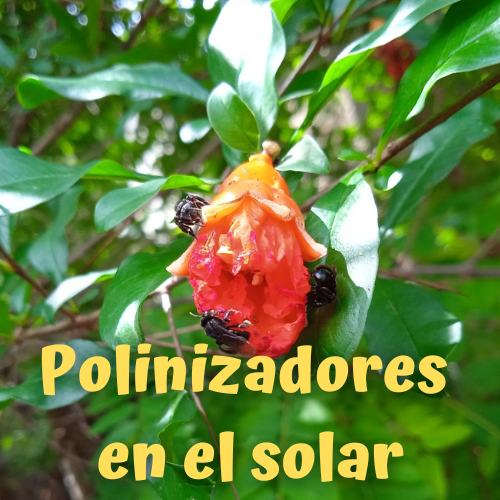
Greetings again to all members of the community. Previously in my blog, I have shared posts about bees, because one of my activities is to promote the conservation of bees in my small plot of land, which I do not do to take advantage of honey, but to protect as far as I can these extraordinary insects, which are one of the cornerstones of ecosystems. In this opportunity I wanted to bring you photos and information of some of the varieties that live in one of the green areas of my home. I say part, because there are other species that inhabit my small forest, but I have not had the opportunity to photograph them, in fact yesterday I saw the elusive green bee, but it was impossible to take a picture of it. If you want to read other posts related to bees, you can see them below:
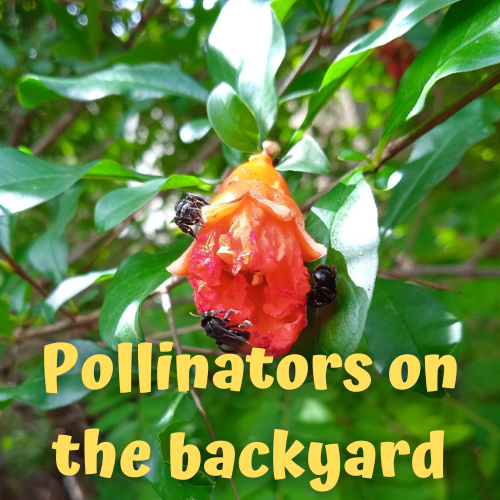

With the arrival of the month of June the plants greened up, and with it they also flowered. It is impressive the capacity of recovery that many of them have, because after having been very deteriorated, with scarce foliage and little vitality, the few rains that have fallen, have given them back their vigor. And at the same time, many pollinators have returned or at least I have been able to observe them while they feed in the flowers, including butterflies, bumblebees and bees, and it is about the latter that this post is about.

Last Thursday, when I was walking around the site, my attention was attracted by the stains on the inside of a topocho or banana leaf (Musa paradisiaca L.) When I approached it, I noticed a variety of meliponas flying insistently, so I approached and opened the leaf, finding that they were making a hive. These hives are transitory, since the leaves of the musaceae age, lose vitality, volume and die, so they cannot be permanent hives as other varieties do, these are like camps that are mobilized from time to time.
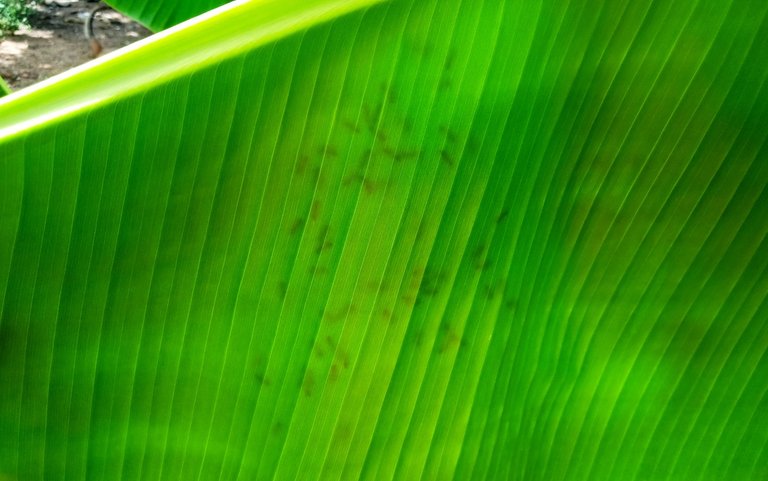
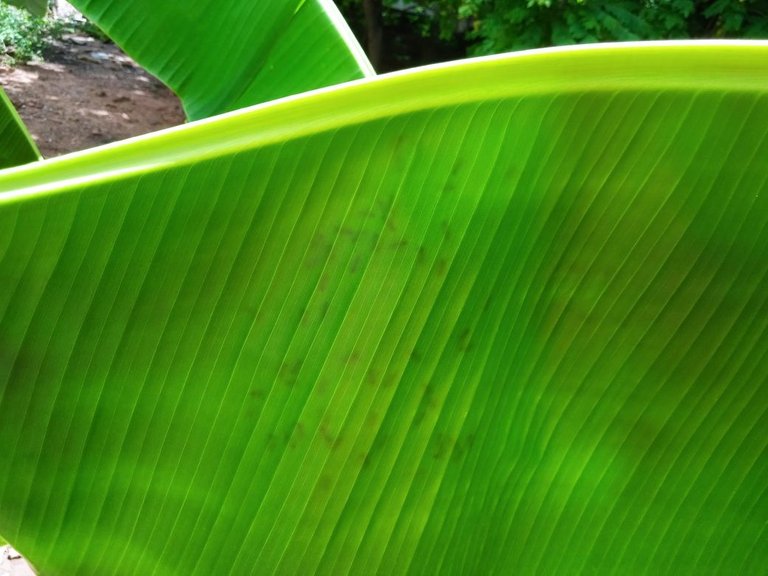
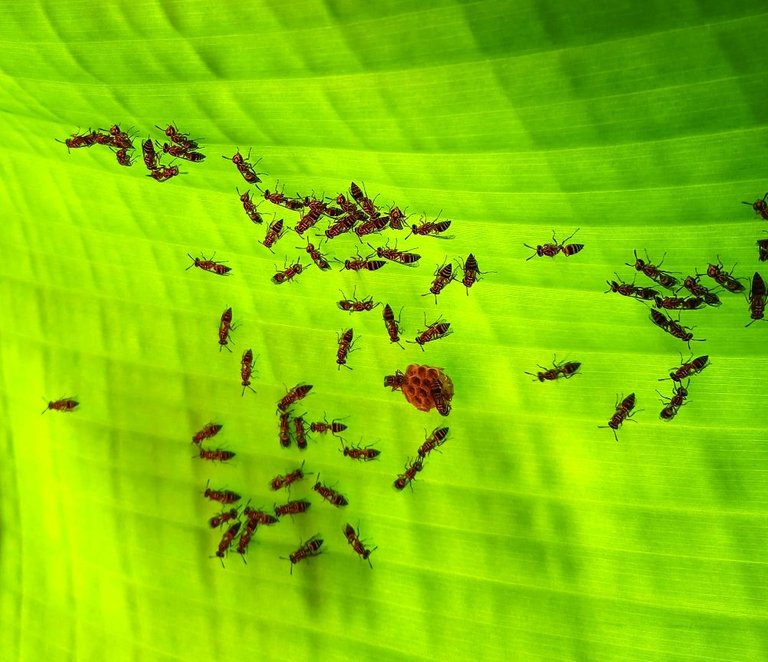



As I got closer, I could observe their small hexagonal cells made of mud, made of earth, a marvel of nature's perfect engineering. These insects, although their anatomy is similar to that of a wasp, lack a stinger, which is why I consider them to be melipona bees, and they are really beautiful, with those yellow designs on their thorax, abdomen and back. To be frank, I have not been able to locate their scientific name or classification, so if any of the readers have this information, I would be grateful if you could leave it in the comments box.
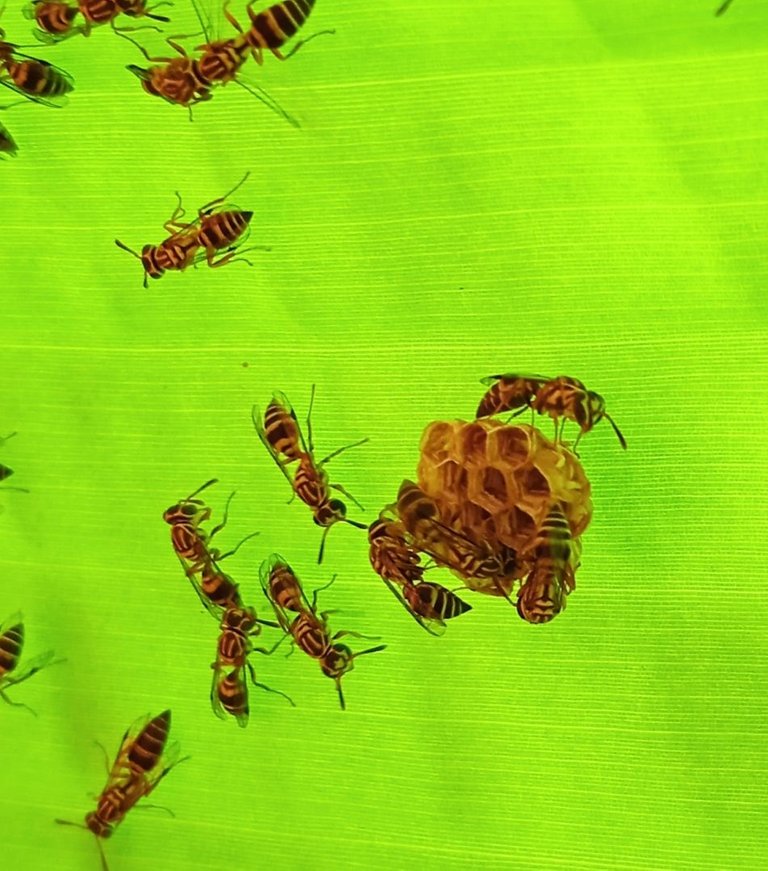
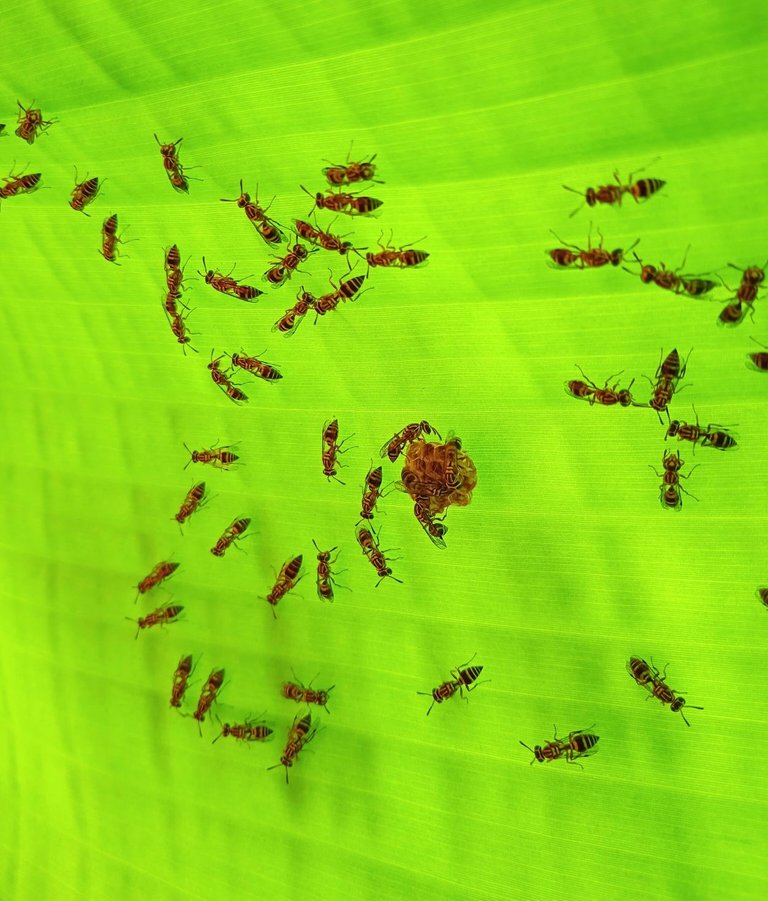

Another of the bees that I was able to document in this month of June 2022, is the Apis mellifera or common bee. Like the rest of the bee species, this one has well-defined tastes and eating habits. Here we can see it sucking flowers from a quelite de monte plant (Talinum paniculatum), of which I have in a concrete cylinder. This plant is highly desired by morrocoyes or turtles (Chelonoidis carbonaria), in addition to its flowers that open exclusively in the morning, when the sun is not yet so strong. Although the photos are somewhat blurred, they would like you to observe the small baskets called corbiculas, which they carry on their legs, which they fill with pollen, which will then be transported to the hive. You can also see another Apis mellifera in a guava flower (Psidium guajava), flowers that like to suck a lot, I have seen them go round and round in the center of the flower, as if they were playing with the pistils of the flowers, it is not a feeding behavior, it is simply for pleasure, they look happy. I guess taking a break in the day while they gaming, holds true for bees as well.
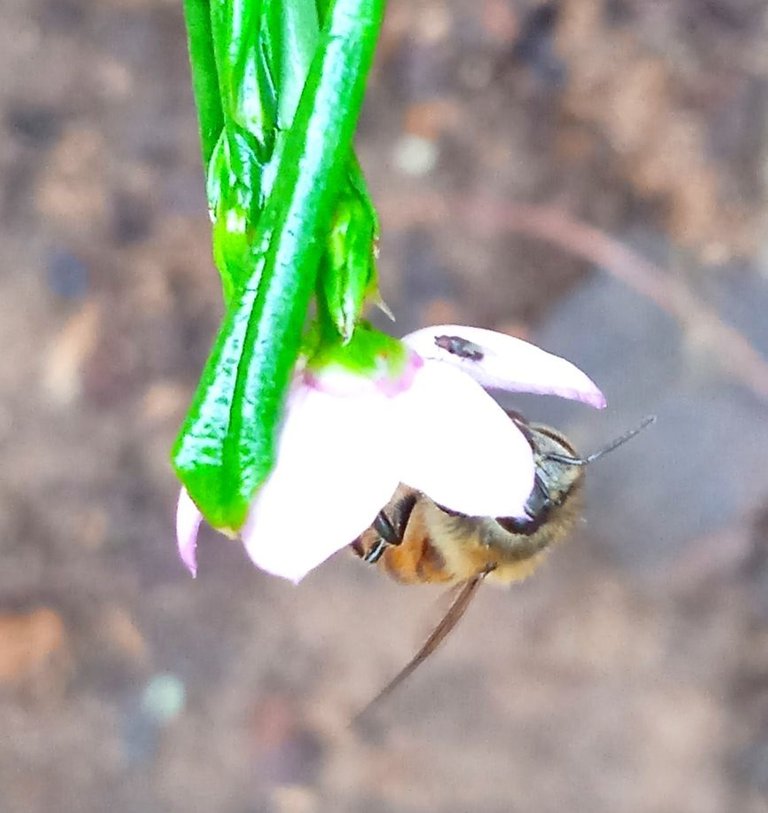
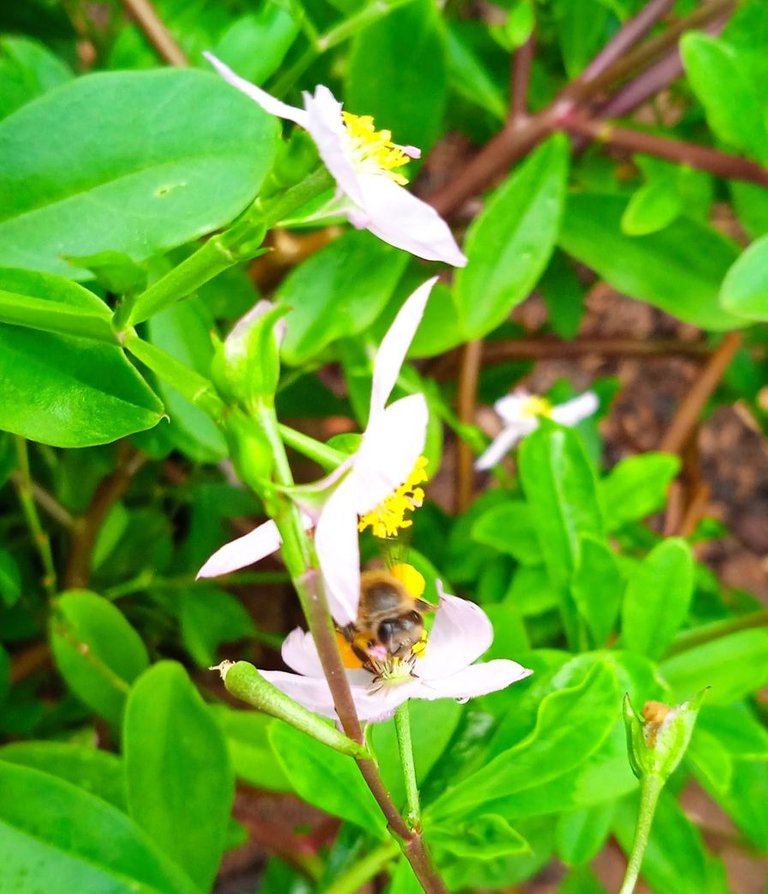
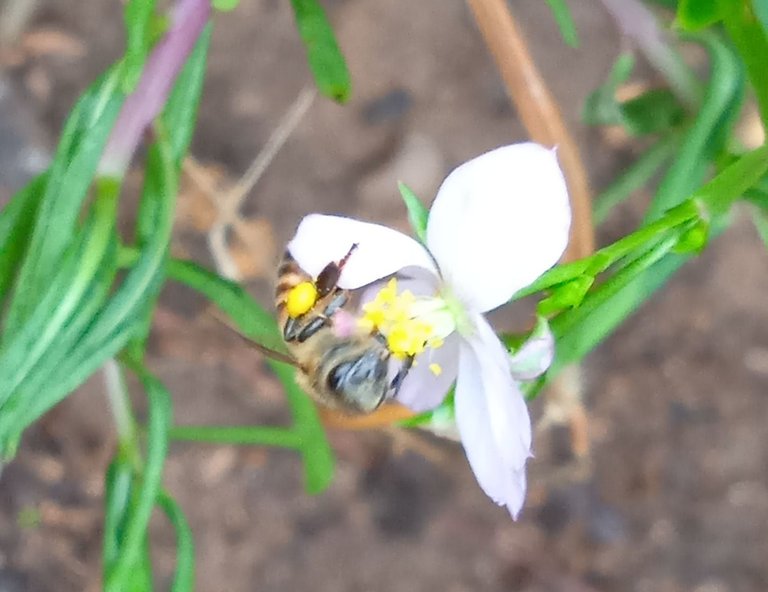

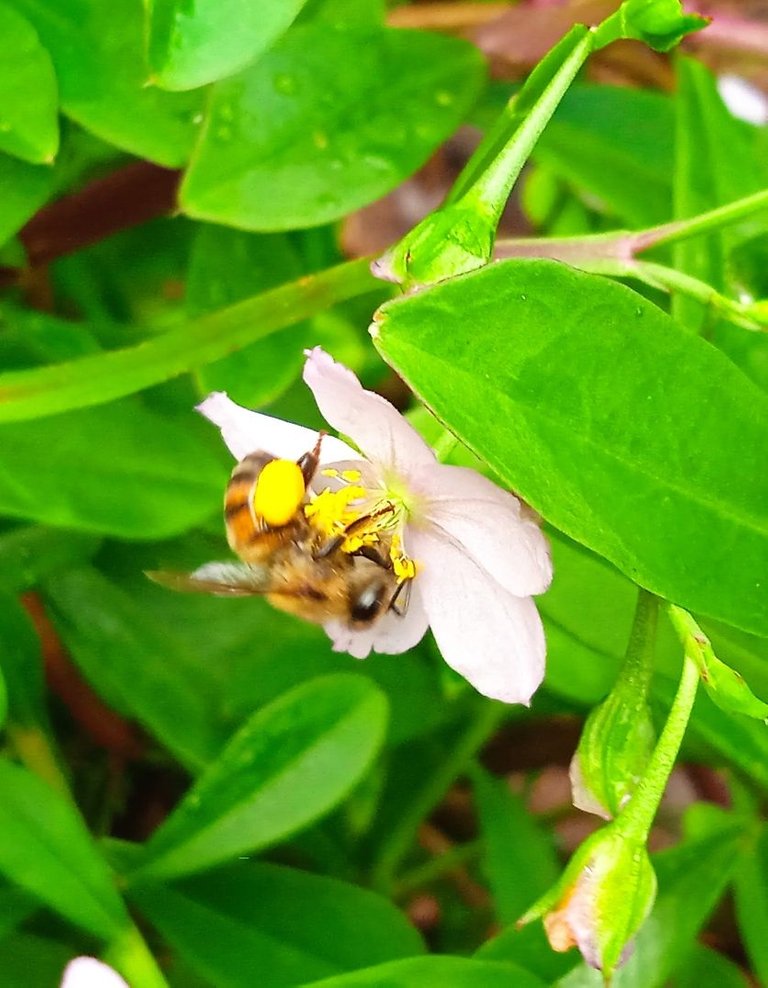
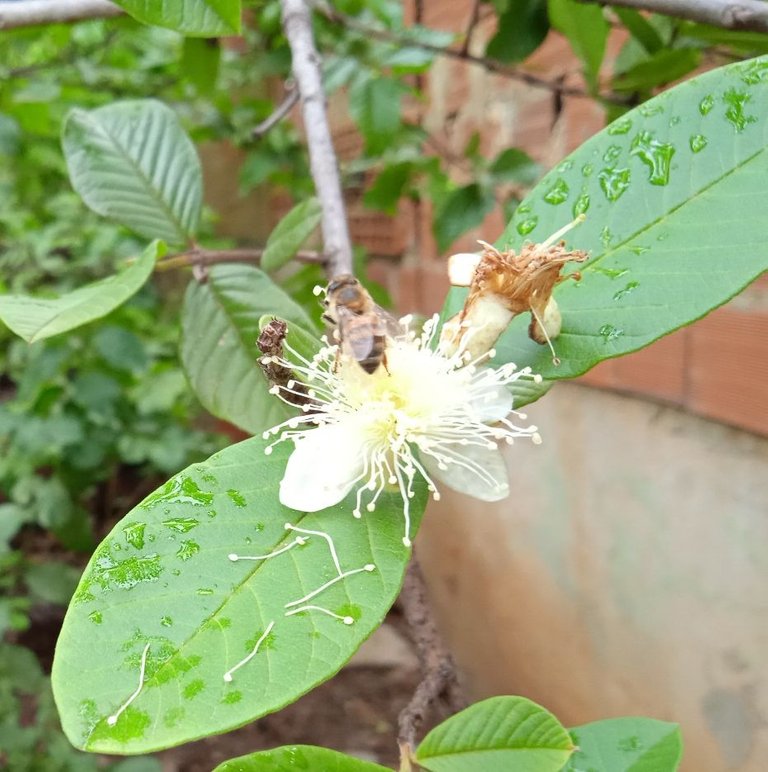
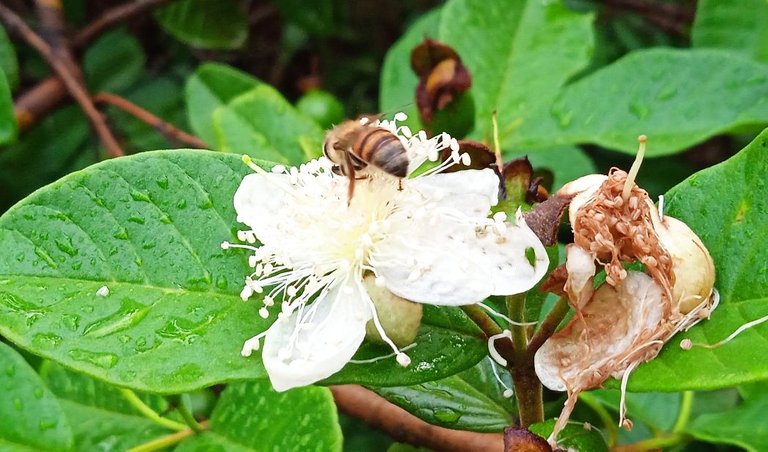

The following photos correspond to the hive that is embedded in a wall of my backyard. This hive is for angelites or aricas, (i>Tetragonisca angustula Illiger), a variety of bees that prefer citrus flowers such as lemon (Citrus sp.) and tangerines ( Citrus reticulata), and also those of trillolit (Combretum indicum), semeruco (Malpighia emarginata) and yellow currants (Phyllantus acidus) ie small flowers. Here they are leaning out of the door of their hive, and as you can see there are several sentinels, approximately 12, which indicates to me that the hive is healthy and strong.
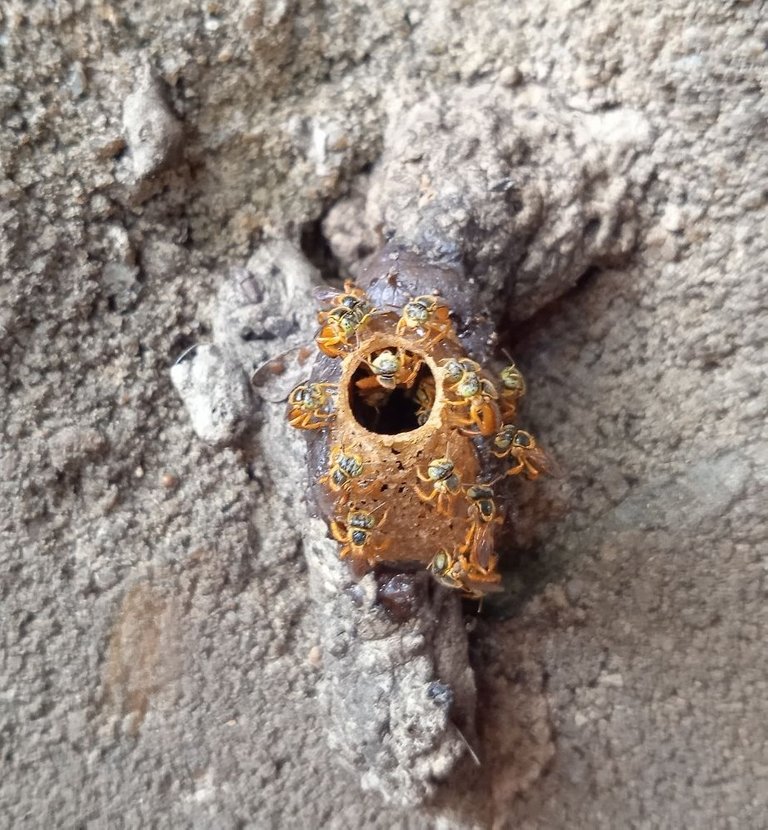
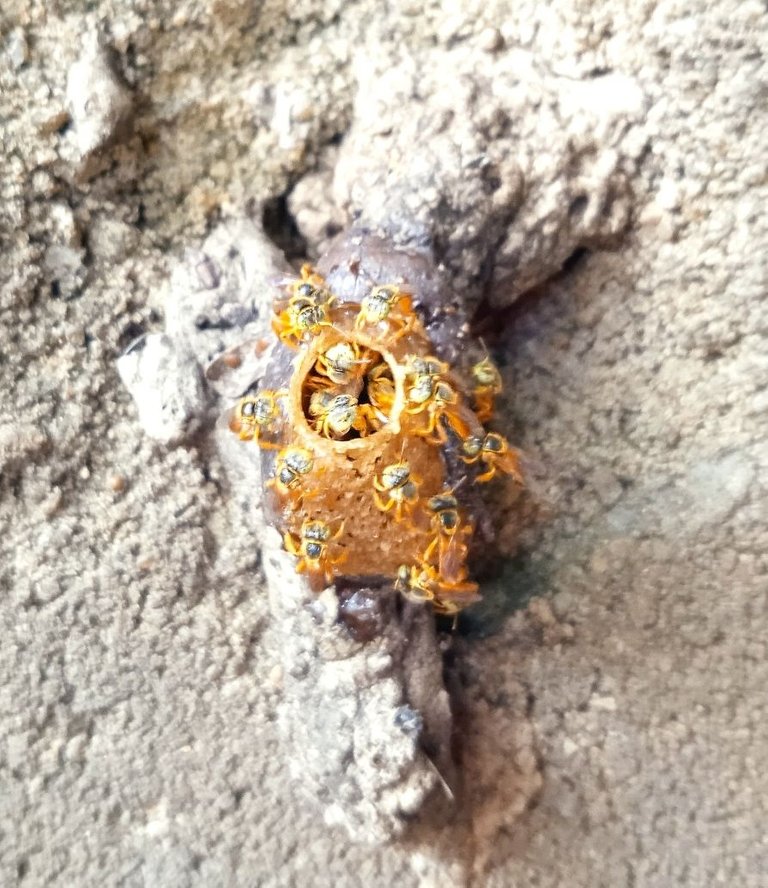

And finally I have left this series of photos of the pegones, (Trigona spinipes), who are very entertained, I would say almost in ecstasy, with this pomegranate flower (Punica granatum< /i>). Although it is true that this variety of meliponas like these flowers, it is also true that I had not seen this behavior of groups of five to three individuals sucking the same flower. It is common for them to do it in large groups with the topocho or banana flowers, but what I was able to photograph is surprising, and I think it is because the musaceae mostly got sick and died and currently there are no acorns with inflorescences, so the pegones adapt to the available food resources.
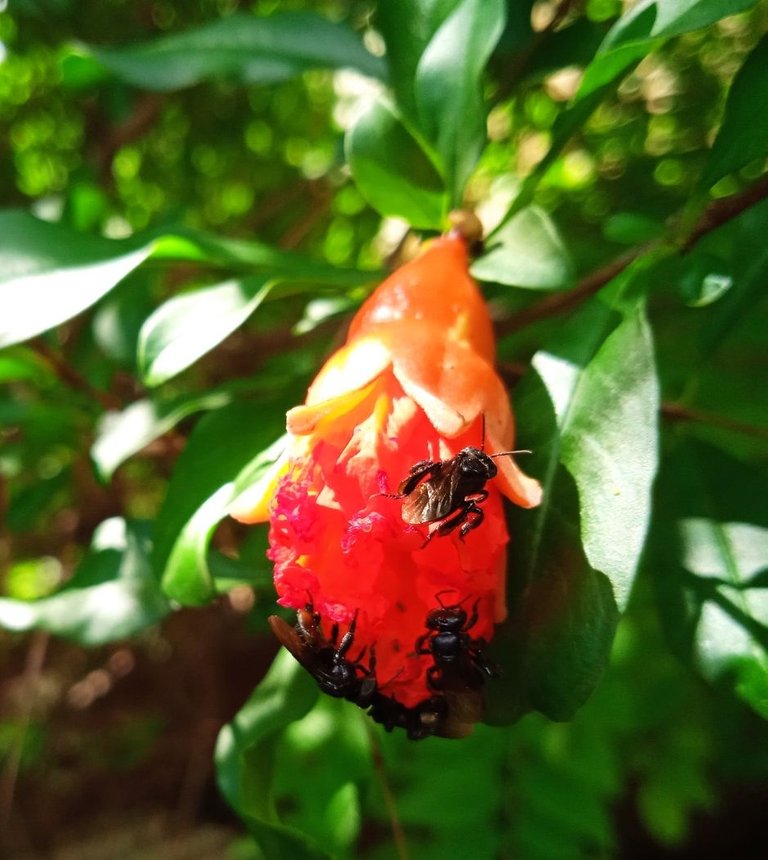
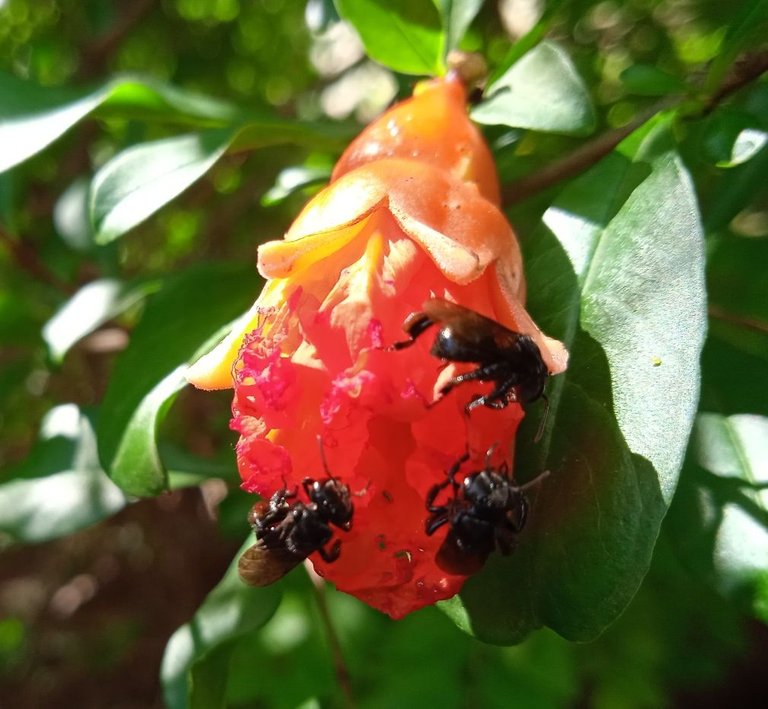
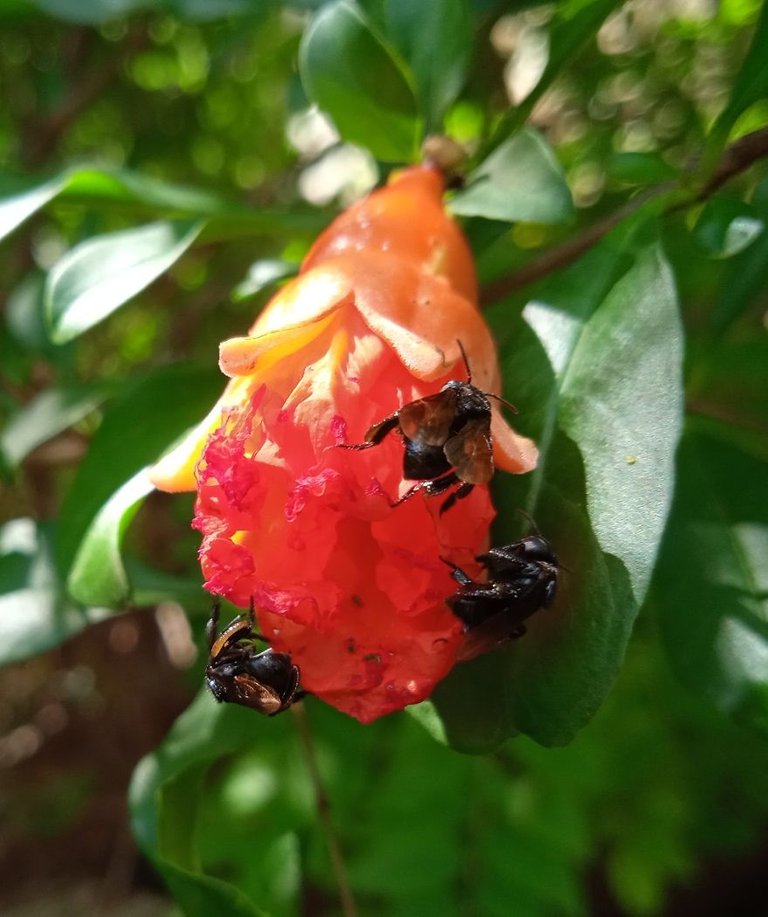
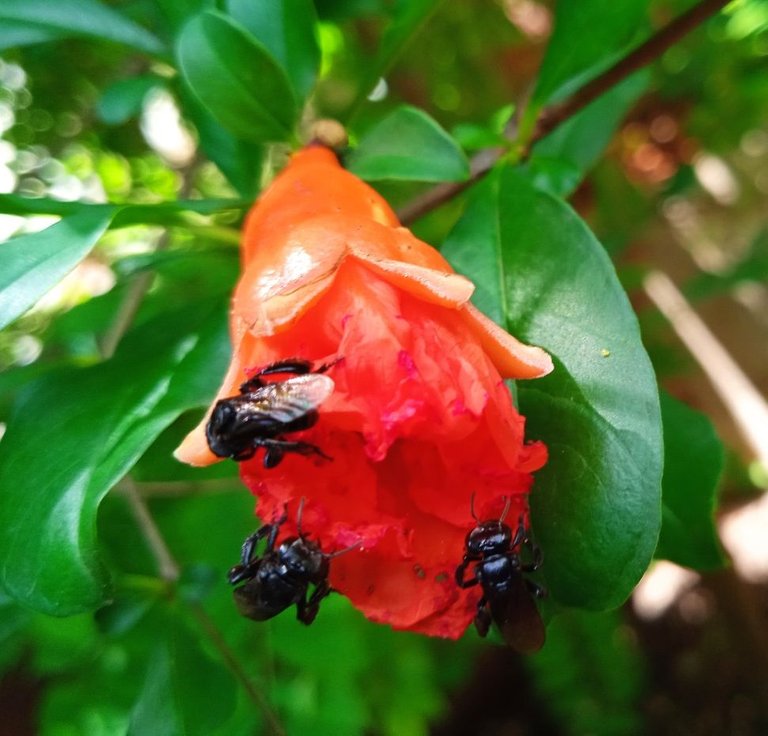


CONCLUSION: Bees in general, and especially those native to each area or country, represent a fundamental part of the functioning of ecosystems. In the case of Mesoamerica, the native bees called meliponas, in all their wide variety, fulfill a vital ecological niche for the existence of flora and fauna, since without plants there are no fruits or grains, and animal species could not subsist without food. Similarly, the Apis, which were introduced to the region after European colonization, have adapted to the climatic and geographical conditions of the continent, also being a species of vital importance for nature. I consider it essential that, as far as possible, we respect and value these insects, and if possible, we protect them, which is very simple with meliponas, since they do not represent a risk to human life due to their lack of stings. being able to cultivate them in the gardens and patios of the houses, as long as there are enough plants for their food.


Todas las fotos de este post son de mi autoría y fueron tomadas con mi teléfono Xiomi REDMI 8 A // These photos are my own, and were taken with a Xiomi REDMI 8 A phone
Los divisores son cortesía de @eve66 quien comparte bellos diseños que embellecen el maquetado de nuestras publicaciones. // The dividers used are courtesy of @eve66 who shares beautiful designs that embellish the layout of our post.
En caso de que se requiera utilizar el contenido o las imágenes de este post y de mis otras publicaciones, agradecería que se hiciera referencia a mi autoría (Fabiola Martínez) y se citara el enlace correspondiente. Gracias. // In case it is required to use the content or images of this post and of my other publications, I would appreciate if you could refer to my authorship (Fabiola Martínez) and cite the corresponding link. Thanks.

 Delegations welcome!
Delegations welcome!

Hello dear friend @sirenahippie good afternoon
Beautiful post, I really like the research work you have done, I appreciate all the information
What beautiful shots, I love how you have documented each species
Thank you very much for this wonderful work.
have a beautiful afternoon
A very beautiful comment @jlufer, thank you very much for visiting my post and my backyard. I have always been aware of the importance of bees, especially the native ones of each place; so for about a decade I have tried to promote their conservation, not for honey extraction purposes, but for the function they have in nature. I recommend that everyone who has a garden or patio, try to help and if possible cultivate bees, they could be meliponas, which do not have stingers. In my house I am especially inclined towards the latter, since I live in the historic center of the town and adjoin a school, which is why I cannot breed Apis, but I can raise Meliponas, which I do in the wild, I let them nest where they like. We can all help bees by planting plants that are honey-bearing, each species has a defined feeding habit, so documentation is needed to know which plants to plant. A big greeting, have a beautiful afternoon too.
Like your dear friend @sirenahippie I am lucky to have a large orchard and see many species of polonizers
In the garden many species coexist naturally, every year, inside the vegetable plants I plant sunflowers, they attract the attention of the bees
in a beautiful feeling of seeing natural life in its own environment
have a beautiful afternoon
Thanks!
Thank you for sharing this amazing post on HIVE!
Your content got selected by our fellow curator @priyanarc & you just received a little thank you via an upvote from our non-profit curation initiative!
You will be featured in one of our recurring curation compilations and on our pinterest boards! Both are aiming to offer you a stage to widen your audience within and outside of the DIY scene of hive.
Join the official DIYHub community on HIVE and show us more of your amazing work and feel free to connect with us and other DIYers via our discord server: https://discord.gg/mY5uCfQ !
If you want to support our goal to motivate other DIY/art/music/homesteading/... creators just delegate to us and earn 100% of your curation rewards!
Stay creative & hive on!
Ohhh! Thanks for the support!
We appreciate your work and your post has been manually curated on behalf of Insects Of The World Community. It will be added to the weekly curation report. Keep up the good work.
Thank you, this is a honor, I'm very happy for your support!
What is making you brave? You can take pictures for bees. I fear them very much.
Hi @trangtran23! Thanks for your comment and your visit to my blog and my backyard.
Bees never hurt me. I treat them gently and don't take any chances, although I've never had an accident with those that have stingers. Almost all the varieties in my backyard are meliponas, meliponas are tame, stingless. Greetings!
Great to hear that from you. I have a bad impression of bees because I was stung once when I was young 😭😭😭
Ohhh, so sorry @trangtran23.
Holaa @sirenahippie. Las fotos en donde aparecen los pequeños himenópteros negro con amarillo realizando las celdas de sus panales, corresponden a avispas de la familia Vespidae y esas son del género Protopolybia, tienen aguijón y cada una de ellas puede picar varias veces. Sin embargo, sus picaduras no son tan dolorosas como en otros ejemplares. Ya que vi tu post, creo que publicaré algo referente a esas avispas jejeje. Espero estés bien, saludos!
Hola! No había leído tu comentario, que bueno que te animaste a hacer tu estupendo post. Un gran saludo @abneagro.